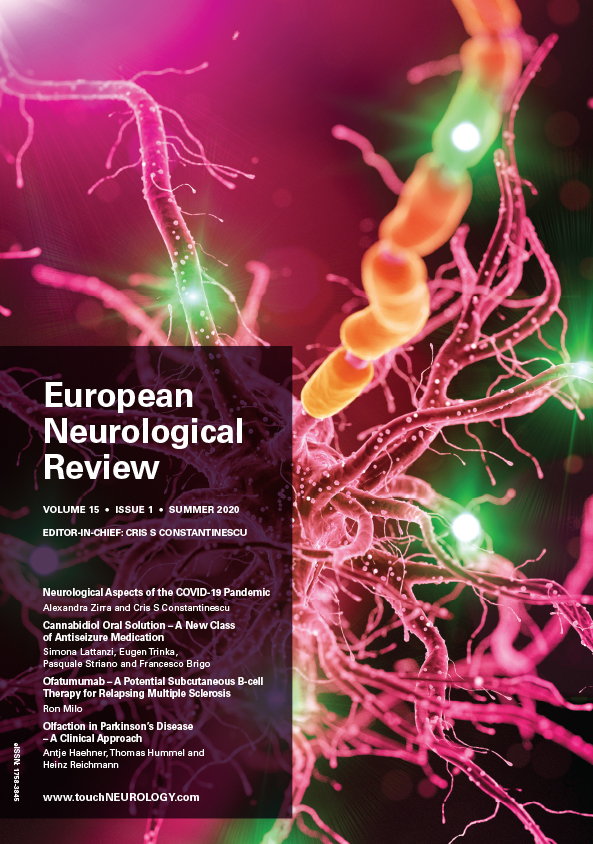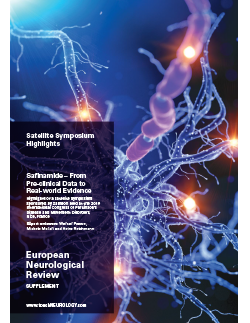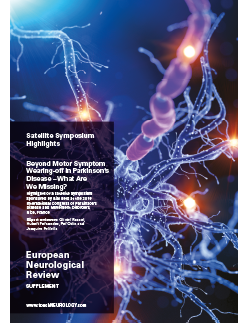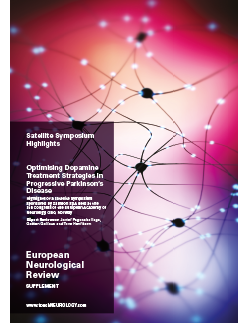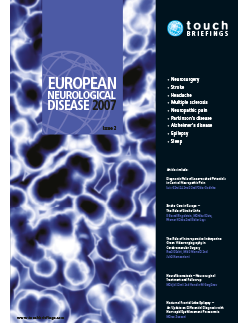
EUROPEAN NEUROLOGICAL DISEASE – VOLUME 2 ISSUE 2 – WINTER 2007
Advisory Panel
In addition to the panel members below, Touch Briefings would like to thank Tamás Dóczi Past Vice President, European Association of Neurosurgical Societies (EANS) Bruno Vellas Principal Investigator, European Alzheimer’s Disease Consortium (EADC) Mary G Baker President, European Federation of Neurological Associations (EFNA)
Foreword
During the last 40 years the approach to neurological diseases has changed tremendously. In the mid 1990s the diagnosis of nervous diseases was mainly made by a long and careful clinical examination. Neurological skills were particular useful in stroke patients and allowed a 90% accuracy concerning the location of the lesion. As stated by Miller […]
Multiple Sclerosis
Evidence-based Medicine and Trial Results
Neuropathic Pain
Definition and Scope of Neuropathic Pain
Migraine
Migraine is one of the most frequent forms of headache. It is estimated that 6–8% of all men and 12–14% of all women suffer from migraine.1-4 The lifetime-prevalence in women is >25%. Before puberty the frequency of migraine is 4–5%. Boys and girls are affected equally. The highest incidence of migraine attacks occurs between the […]
Introduction
Epilepsy
Introduction
Childhood epilepsy poses unique challenges to the treating physician. First of all, and more than in adults, epilepsy should be considered as a symptom of an underlying brain dysfunction and a thorough diagnostic work-up has to be done in many children presenting with epileptic seizures. This includes detailed neuro-imaging, genetic and tailored metabolic work-up. Not […]
Introduction Since 1990 around seven new anti-epileptic drugs (AEDs) have joined the marketplace. Among them, topiramate (TPM), a sulphamate-substituted monosaccharide, which was originally synthesised as an oral hypoglycaemic, has proven to be remarkably effective through a wide series of trials. Mechanism of Action of Topiramate
Deep brain stimulation (DBS) has opened new avenues in the treatment of degenerative diseases, such as Parkinson’s disease, essential tremor and dystonia, and new trials in obsessive compulsive disorder (OCD) and depression are being conducted with promising preliminary results. Epilepsy could also benefit from this new technique and controlled, double-blind clinical trials are being conducted […]
Epilepsy includes a heterogeneous group of disorders, affecting approximately 0.8% of the population, and sharing in common the presence of recurrent seizures. Most patients with epilepsy can be controlled with anti-epileptic drugs (AEDs), and many of them can eventually discontinue their medication. However, seizures cannot be controlled in approximately 30% of patients. As multiple molecular […]
Parkinson’s Disease
Parkinson’s disease (PD) is a progressive disorder of dopamine depletion involving multiple motor and non-motor circuits of the basal ganglia. Although the cardinal features of the disease are characteristically motor in nature (resting tremor, bradykinesia, rigidity and postural instability), changes in cognition, mood and emotion are common. Pathologically, it is characterised by fibrillar alpha-synuclein inclusions, […]
Eventually the shortened and unstable motor response becomes unpredictable with no apparent relation to the timing of levodopa intake.This is known as the ‘on-off ’ phenomenon.1-4 The clinical syndrome is complicated further with the emergence of involuntary movements that are often choreiform but sometimes dystonic in nature. The significance of these motor response complications lies […]
Alzheimer’s Disease/Dementia
With a prevalence of 4,886,252 cases, dementia is one of the leading brain disorders in the European Community and is responsible for estimated total costs of €55 billion.1 The prevalence of dementia is dependent on the age group with a mean of 2.1 cases/100 of the population in the group 65–74 years, of 6.9/100 in […]
Introduction Human ageing is joined by various physical, social and cognitive-mnestic changes, which can differ considerably both inter- and intra-individually. Cognitive-mnestic changes are caused by processes in the central nervous system, but they are also determined by genetic factors, education, profession, lifestyle, intellectual and physical activity and, especially, general physical condition.
Alzheimer’s disease (AD) is the most common cause of dementia. It is a progressive neurodegenerative disorder resulting in cognitive and behavioural impairment of sufficient severity to markedly interfere with social and occupational functioning. The prevalence of AD increases steadily after the age of 65, with an estimated prevalence of approximately 50% in patients aged 85 […]
Stroke
Although the incidence of ischaemic stroke increases with age, stroke in children and young adults is not uncommon.1 The average population-based annual incidence rate for ischaemic stroke (cases per 100.000 per year) has been reported as about 11.3 among those aged 15 to 49 years.2,3 For at least 20–40% of the stroke cases in young […]
Introduction Fabry disease is a treatable X-linked disorder caused by a deficiency in alpha-galactosidase. Decrease of the enzyme activity leads to accumulation of globosyltriaosylceramide (Gb3) in tissues resulting in progressive organ dysfunction especially of the heart, the renal system and the vascular system. Frequency of Fabry Disease The incidence of Fabry disease varies widely from […]
Technology & Services Section
Innovations with exceptionally high patient benefits have less to do with a company’s size than with its focus and creativity. By concentrating on carefully selected therapeutic fields, Merz contributes to the health, alleviation of pain, and improvement in quality of life for many people. Merz Pharmaceuticals is an international researching company, specialized in drugs for […]
Solvay Pharmaceuticals is one of the world’s 40 leading pharmaceutical companies. It is particularly well placed in its selected therapeutic fields: • Cardiometabolics • Neuroscience • Influenza vaccines • Pancreatic enzymes • Gastroenterology • Women’s and men’s health
The first and only transdermal patch for the monotherapy of Parkinson’s disease (PD) is now available.
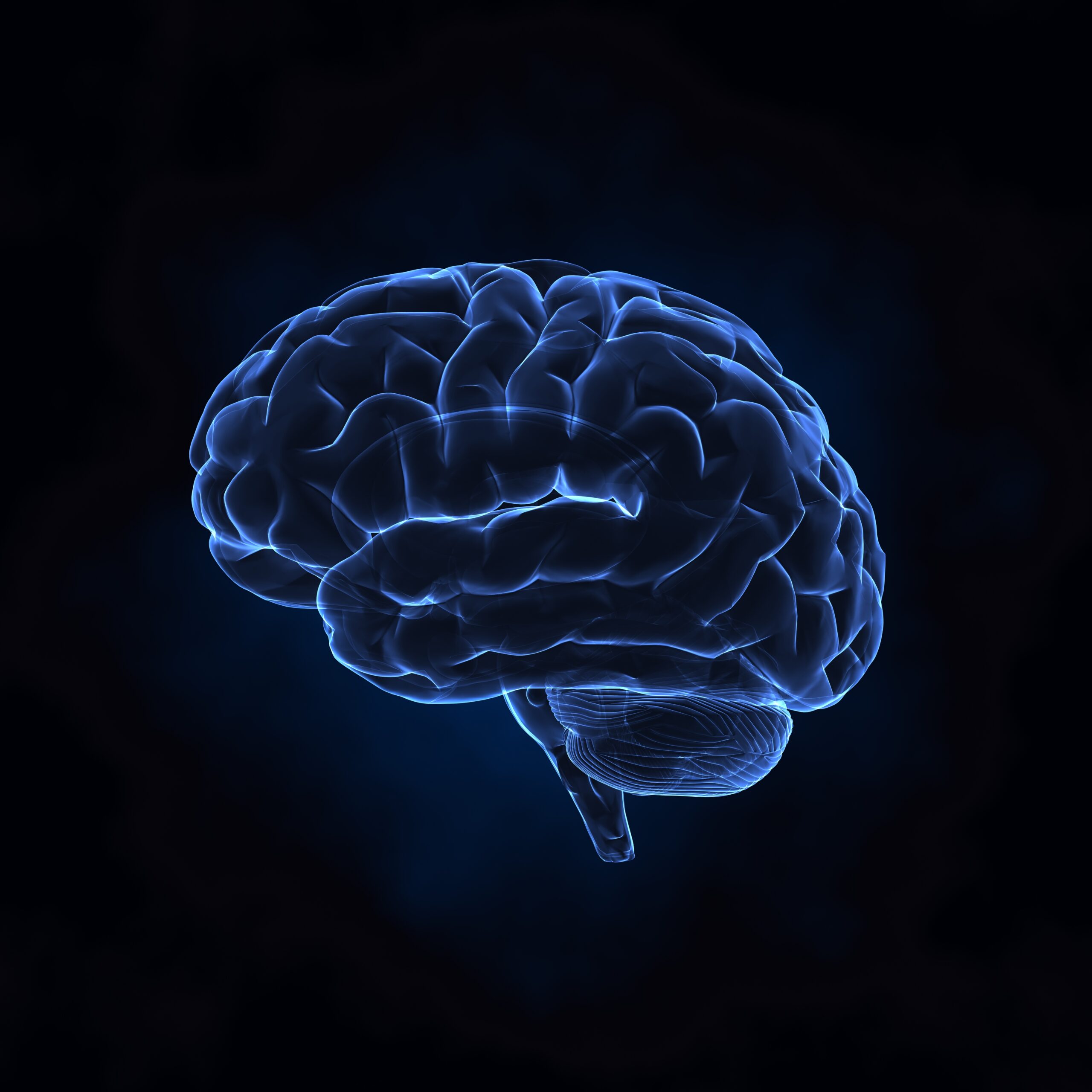
Trending Topic
Parkinson’s disease (PD) is a complex neurodegenerative condition that predominantly affects older people, with a rising prevalence worldwide.1,2 There are many on-going challenges and unmet needs in PD: difficulties in making an accurate diagnosis (particularly in the early stages of the disease), troubling side effects associated with the available pharmacological treatments, a lack of effective disease-modifying therapies […]
Journal Archive
European Neurological Review is a peer-reviewed, free-to-access, bi-annual neurology journal comprising review articles, case reports, practice guides, theoretical discussions, and original research. It features balanced and comprehensive articles written by leading authorities, addressing the most important and salient developments in the field of neurology in practical terms.
Latest articles videos and clinical updates - straight to your inbox
Log into your Touch Account
Earn and track your CME credits on the go, save articles for later, and follow the latest congress coverage.
Register now for FREE Access
Register for free to hear about the latest expert-led education, peer-reviewed articles, conference highlights, and innovative CME activities.
Sign up with an Email
Or use a Social Account.
This Functionality is for
Members Only
Explore the latest in medical education and stay current in your field. Create a free account to track your learning.


